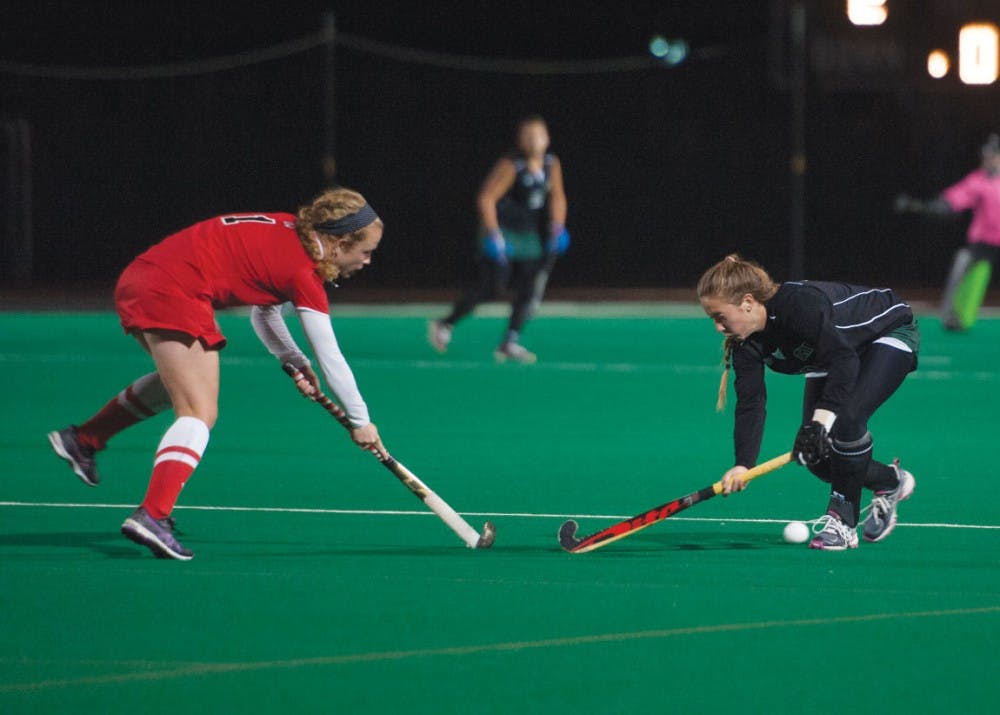Some athletes experience redshirting for their respected teams in different ways.
Studies have shown when a teacher or professor uses a red pen to mark incorrect answers on a student’s paper, the students take the comments and marks in a negative manner. Red also has other negative connotations: it’s the color of blood and connotes concepts such as evil and violence.
But red can also symbolize things such as love, passion and determination.
The ambivalent nature of the color red is no different for collegiate athletes who have to go through a redshirt year — a year where they extend their length of eligibility to five seasons instead of the traditional four.
For some, a redshirt year may be knowing playing time will be limited during their freshman year due to the team’s star senior holding the starting role, or a student-athlete may get injured and want to sit out, thus taking a redshirt year to extend his or her eligibility.
For redshirt sophomore Kennedy Farr, who is on Ohio’s field hockey team, her reason was the result of transferring from Southern Connecticut to Ohio in 2014.
Although Farr was able to play for Ohio right away since she did not play during her D-II stint at Southern Connecticut, her mindset at Southern Connecticut was as conflicted as the meanings of the color red.
“My mindset was that it’s hard going out to practice every day, and putting in the work but not getting the result of being able to play in the game,” Farr said. “That was really hard, but your mindset is just always to be positive.”
{{tncms-asset app="editorial" id="848fc192-7671-11e5-a4aa-13de951b2ce0"}}
So how does a student athlete like Farr stay positive, knowing they may not play no matter how much work they put in during practice?
A "team-first" mentality, for one, helped Farr.
“I tried really hard to always keep a positive mind and saying this is good for me, this is good for my team,” Farr said.
“It is personal, but in a way it’s also helping the whole team. It’s a bigger picture than just yourself—it’s helping your team, helping everyone else, and also that will help you in turn with your skills and mindset.”
Although Farr redshirted at Southern Connecticut and subsequently transferred to Ohio, the shades of redshirts are still varied -- particularly on Ohio's men’s cross country and football teams.
The men’s cross country team captain Jack Shaeffer is a fifth-year senior, as he was redshirted heading into his junior year due to a stress fracture in both of his legs.
“I got injured going into my junior year, so I knew pretty early on in the season that I wasn’t going to be able to compete,” Shaeffer said.
Shaeffer said though he was injured, knowing early in the season allowed him to weigh his options and decide what he wanted to do academically.
“It just worked out really well where I could just kind of assess it, and say I can stay a fifth year, and improve my academics by picking up a second major,” Shaeffer said.
But what if a student-athlete isn’t a transfer? Or they didn’t get injured during the middle of their collegiate career? What if they are willing and capable, but simply get little-to-no playing time?
For freshman men’s cross country runner Jacob Heinold and redshirt freshman cornerback Jalen Fox, this is the case.
Heinold came out of Finneytown High School in Ohio, having a personal-best of 17:10:47 in the 5K. For now, though, Heinold is waiting for his chance to carry the Bobcats.
Heinold said he is not treated any differently than runners who get more time. Shaeffer mentioned that Heinold and other redshirts train as much as the other runners.
As Heinold prepares for the long-term process, he aspires to score points for the Bobcats in big meets such as the Mid-American Conference, regionals, and All-Ohio.
“The long-term goal is being able to produce for the team,” Heinold said. “I’m just looking to get better here so I can be better my senior year or fifth-year.”
As the fighting Bobcat spirit is shown in Heinold, it is apparent in the roar of boisterous yells from Fox’s teammates as he picks off the opposing practice team’s quarterback.
Fox, who had three interceptions his junior year at Wyoming High School, relishes the importance of working hard in practice. Before and after every practice, he works on his press technique —what he feels is his biggest weakness.
“I come in here with the mindset every day, to get better each and every day,” Fox said. “I put in the time even after practice to better prepare myself and to get better.”
Fox is currently seeing some time on special teams, which he believes is preparing him for a starting role in the future.
Fox said he hopes to start next year for Ohio coach Frank Solich, but he knows that will only come with more hard work.
“I feel like (getting time) gave me some great experience overall. I feel it gives me better preparation for next year,” Fox said.
Whether a redshirt extends their eligibility due to an injury or the result of transferring, the mindset of each one is of the same hue. Hard work is necessary for any student-athlete, but the extra effort a redshirt puts in is not a result of anger or dissonance, but that of pride and determination.
@CameronFields_
Cf710614@ohio.edu






